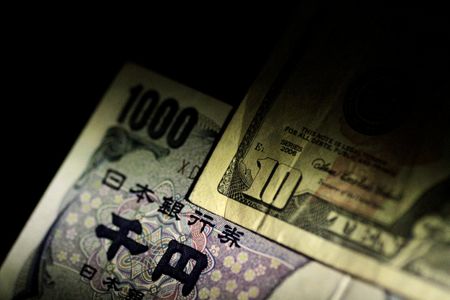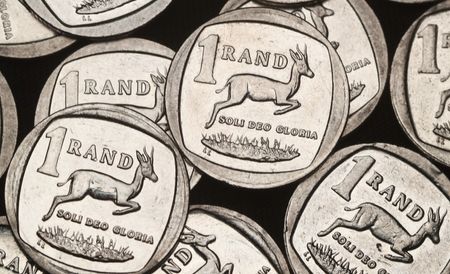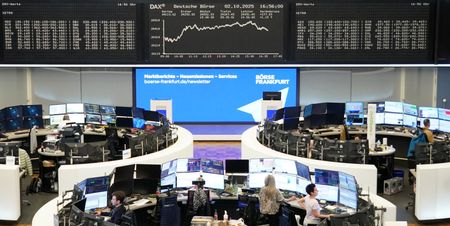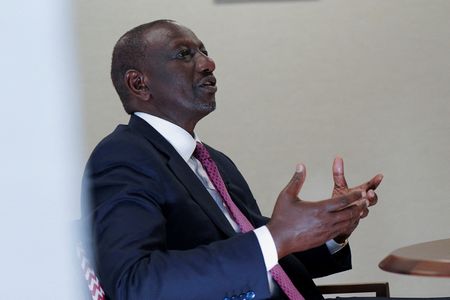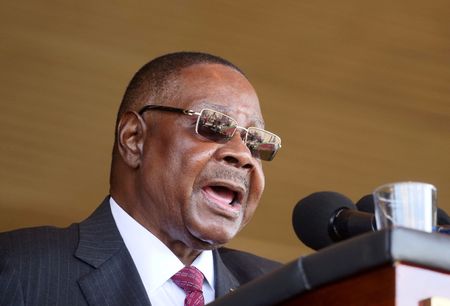By Gregor Stuart Hunter and Alun John
SINGAPORE/LONDON (Reuters) -Politics dominated currency markets on Monday as the Japanese yen weakened by the most in five months against the dollar with Sanae Takaichi looking set to become Japan’s next prime minister, and the euro slid after France’s new government quit.
Takaichi is a former economic security and internal affairs minister with an expansionary fiscal agenda for the world’s fourth-largest economy. She won the ruling Liberal Democratic Party’s leadership election at the weekend, putting her on track to become Japan’s next prime minister.
Her victory caused traders to reduce bets that the Bank of Japan will hike interest rates this month and sent the yen tumbling across the board.
UNCERTAINTY OVER POLICY PRIORITIES IN JAPAN
The dollar at one point rose more than 2% to 150.47 yen, its highest level since early August. It was last up 1.7% at 149.91, and if sustained, that would be its biggest daily gain since May 12.
The euro hit 176.22 yen in Asian trade, its highest ever against the Japanese currency. It later pared those gains to be up 1.2% at 175.3 yen following the collapse of the French government.
Deutsche Bank had advised clients to position for yen appreciation, but they “are now getting out following the LDP election outcome this weekend”, the bank’s global head of FX research, George Saravelos, said in a note to clients.
“Sanae Takaichi’s surprise victory reintroduces too much uncertainty around Japan’s policy priorities, and the timing of the BoJ hiking cycle,” he wrote.
Long-dated Japanese government bonds sold off. And the yen swaps market indicated just less than a 50% likelihood of a rate hike by December, down from 68% on Friday.
However, some investors said U.S. factors that could weigh on the dollar in the coming weeks, such as the Federal Reserve continuing to cut rates, might stop traders selling the yen for dollars too dramatically.
“Most see short dollar-yen as the cleanest expression of a weaker dollar. Takaichi is the idiosyncratic risk. But the Fed is the bigger, more obvious, more immediate macro risk,” said Rong Ren Goh, a portfolio manager in the fixed income team at Eastspring Investments.
PRESSURE ON MACRON AFTER LATEST SETBACK
Meanwhile, the euro slid after France’s new Prime Minister Sebastien Lecornu and his government resigned on Monday, just hours after the announcement of the cabinet line-up, deepening France’s political crisis.
The euro dropped 0.6% to $1.1681 and also slid 0.3% against the pound to its lowest in nearly a month.
“The pressure now goes back to President Macron to see how he deals with this deadlock,” said Lee Hardman, senior currency strategist at MUFG.
“For the market, the worst case would be if he tries to break that deadlock by calling snap parliamentary elections. That would extend the uncertainty in the near term and likely trigger another leg lower for the euro.”
Sterling was down 0.3% against the dollar at $1.3431, while the Swiss franc softened a similar amount to 0.7993 per dollar.
Elsewhere, this week traders will have to grapple with the absence of important U.S. economic data as the government shutdown continues.
That could make it hard to shake current market pricing signalling that easing at the Fed’s October meeting is a near-certainty. Fed funds futures implied a 96.7% probability of a 25-basis-point rate cut, according to the CME Group’s FedWatch tool.
(Reporting by Gregor Stuart Hunter in Singapore and Alun John in London; additional reporting by Vidya Ranganathan Editing by Shri Navaratnam, Kim Coghill, Kevin Liffey, Alex Richardson and Joe Bavier)

